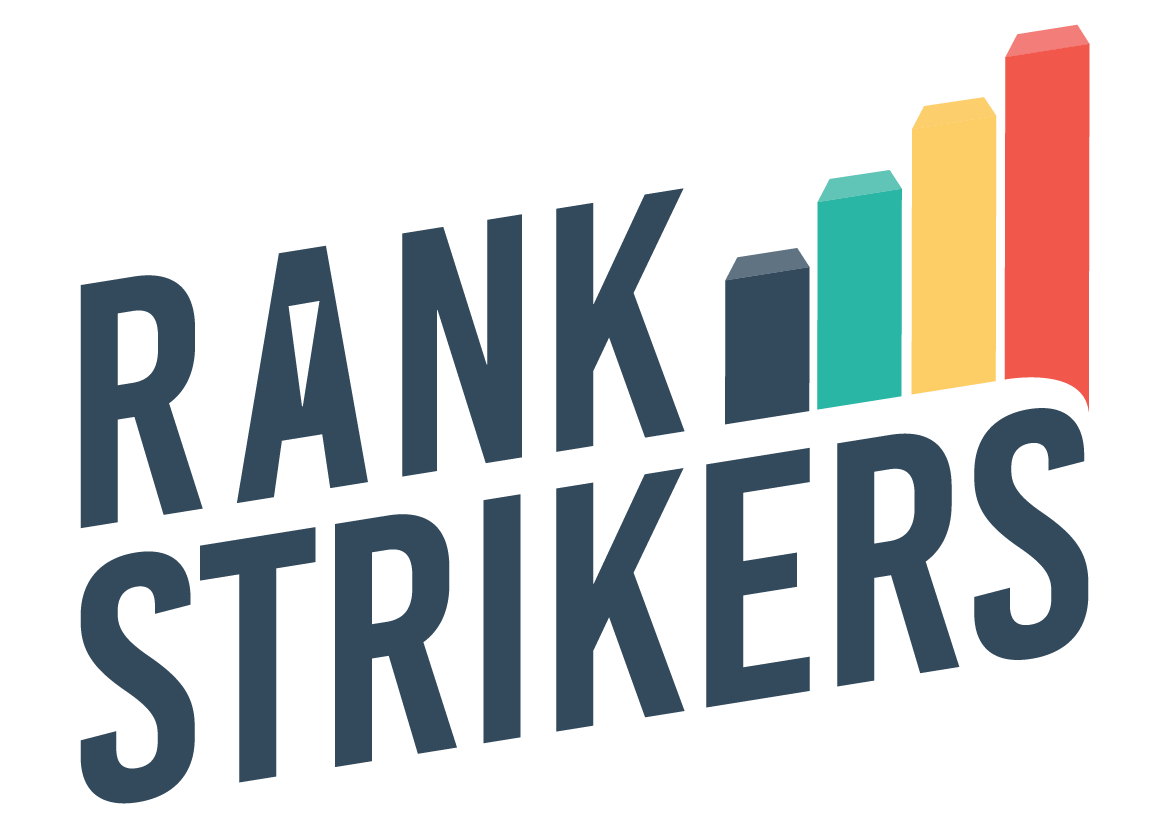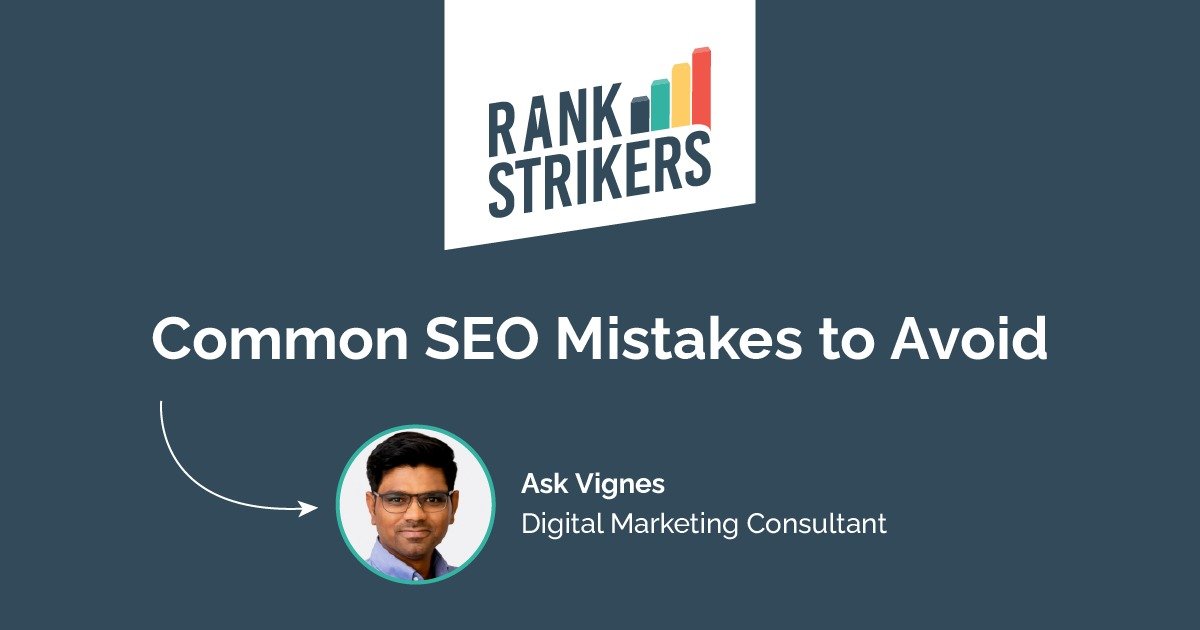SEO Pitfalls: Common SEO Mistakes to Avoid
Ranking high in search engine results is crucial for driving traffic and visibility to your website. But with search engine algorithms constantly evolving, it's easy to fall victim to common Search Engine Optimization (SEO) mistakes. Here is a concise guide to help you address prevalent SEO challenges that could be hindering your webpages from achieving the top spot on Google search results.
1. Ignoring the Power of Keyword Research: Skipping keyword research is like driving blindfolded – you might end up reaching the wrong destination. Invest time in understanding the terms and phrases your target audience is searching for, and then optimize your content accordingly. Targeting the wrong keywords can leave you competing against giants, hindering your chances of ranking well.
How to avoid it: Perform thorough keyword research, develop a keyword map, set achievable ranking goals considering your website's authority and online visibility.
2. Content: Quantity Doesn't Trump Quality: While consistently creating content is essential, prioritize quality over quantity. Google prioritizes valuable and informative content that resonates with your audience. Focus on creating well-researched, engaging pieces that address your target audience's needs and answer their questions.
How to avoid it: Understand different search intents and the content needed, research competition for a specific query on search results page (SERP).
3. Keyword Stuffing: A Surefire Turn-off: Forcing keywords unnaturally into your content not only hurts readability but can also be penalized by search engines. Instead, integrate keywords organically throughout your content, ensuring they flow naturally and enhance the user experience.
How to avoid it: Reduce using simpler words while keeping the keyword density natural. Write for the reader first, then focus on SEO.
4. Forgetting the Magic of Meta Descriptions: Meta descriptions are those snippets displayed under your website title in search results. Craft compelling and informative meta descriptions that entice users to click on your link. Think of them as mini-adverts for your content, accurately reflecting what users can expect to find.
Here are some common meta tag mistakes that you can easily fix:
Missing meta titles or description
No keywords
Too many characters
No action verbs
No selling points.
“By skipping meta tags, your content is less likely to be found and ranked based on keywords.”
5. Neglecting Mobile Friendliness: With the majority of web searches now occurring on mobile devices, having a website that isn't mobile-friendly is a major SEO faux pas. Ensure your website displays seamlessly across all devices, offering a smooth user experience regardless of the screen size.
How to avoid it: Clarify sizes, reduce dropdowns, and simplify navigation.
6. The Link-Building Labyrinth: While backlinks (links from other websites to yours) remain a crucial SEO factor, remember: quality over quantity. Avoid engaging in black-hat tactics like buying links or participating in link schemes. Focus on building high-quality backlinks from reputable and relevant websites.
How to avoid it: Engage with niche websites, avoid buying links, and produce quality content to earn natural backlinks.
7. Crawlability and Indexation: Don't Get Blocked: Ensure your website is easily accessible to search engine crawlers by addressing technical issues that might prevent them from indexing your content. Regularly check your website for errors using tools like Google Search Console and address any crawl errors promptly.
How to avoid it: Update and send XML sitemap. Identify and fix broken or redirected internal links.
8. Ignoring the User Experience (UX): SEO isn't just about pleasing search engines; it's about creating a user-friendly website experience for your visitors. Focus on elements like website navigation, page loading speed, and clear calls to action. Remember, a website that users enjoy is more likely to keep them engaged and coming back for more.
How to avoid it: Given that Core Web Vitals impact rankings, it's crucial to prioritize fixing Cumulative Layout Shift problems.
“A website owner that is having too many 404 errors is signalling Google that they are not frequently reviewing their website or that they have abandoned it. This wouldn’t contribute to good ranking in SERPs.”
9. Failing to Track and Analyze: SEO is an ongoing process, not a one-time fix. Utilize website analytics tools to track your website's performance, identify areas for improvement, and refine your SEO strategy accordingly. By analyzing data and user behavior, you can continuously optimize your website for better search engine performance and user experience.
10. Duplicate Content: Duplicate content refers to a scenario where a webpage on your site features identical content as another page within the same domain. This duplication can potentially lead to indexing issues and affect the site's search engine optimization (SEO) performance.
How to avoid it: Use canonical tags for similar pages with different URLs to prevent duplicate content issues. Avoid making pages for similar keywords.
“A B2B content marketing study conducted by CMI discovered that 60% of digital marketers don’t have a clear content plan. 33% of marketers have a content strategy, but it’s not documented, and 27% have no strategy whatsoever.”
11. Image Issues: Optimizing images on your site plays a crucial role in boosting your visibility on Google Images, ensuring better accessibility for all users, and elevating the overall user experience (UX). Conversely, neglecting image optimization may lead to detrimental effects such as a subpar user experience, decreased site speed, and a diminished capacity to secure a high ranking on search engines.
Common SEO image issues include:
Lack of alt text
Oversized images
Broken images
How to avoid it: Perform routine website checks for broken or oversized images, use specific titles and descriptions for images, automate optimization processes, select suitable file types, and enable lazy loading.
Don’t Let SEO Issues Slow You Down
Building a strong SEO presence takes time and effort. Don't get discouraged if you don't see results overnight. Be patient, consistent, and persistent in implementing your SEO strategy, and you'll gradually see your website climb the search engine ladder.
By avoiding these common pitfalls and focusing on creating valuable content, building a user-friendly website, and implementing a sustainable SEO strategy, you can ensure your website gets the search engine love it deserves. Remember, SEO is a journey, not a destination, so keep learning, adapting, and refining your approach for long-term success.
💡 Bonus Tips: Focus on users in website development and content creation for competitive advantage amid SEO challenges. Set a range of KPIs to accurately measure your SEO success. These might include:
Registering with Google Search Console and Bing Webmaster Tools
Set up Google Analytics and SEO analytics tools
Overall organic traffic.
Keyword rankings and CTR for priority keywords.
Conversion rates from organic traffic.
Total sale volumes from the website.
Rank higher on Google with our full-service SEO Agency in London and Kent. Our SEO Services cover local SEO, technical SEO, and more. Schedule a discovery call with one of our certified SEO experts.
Written by:


